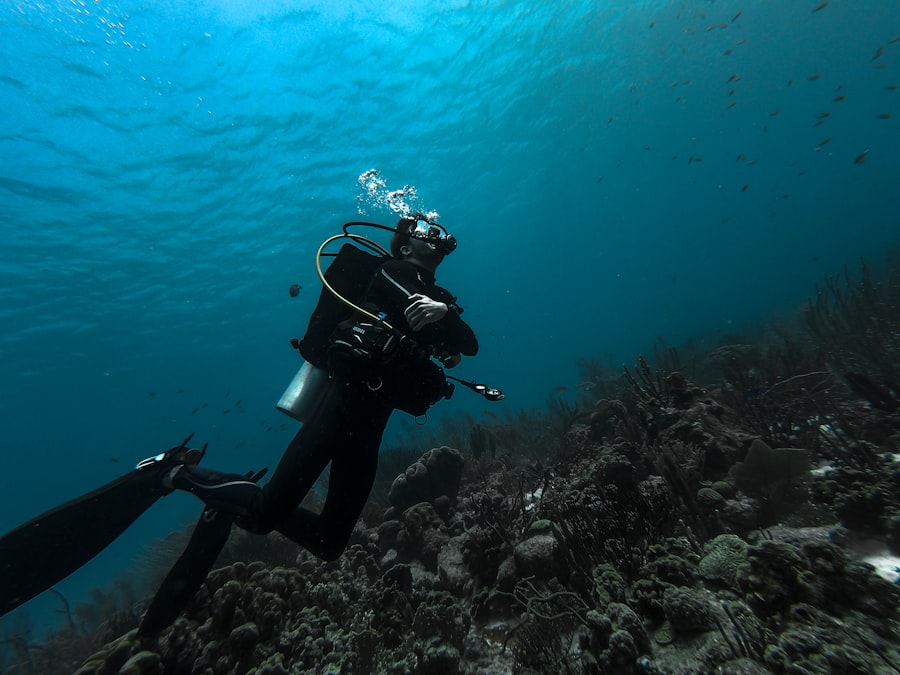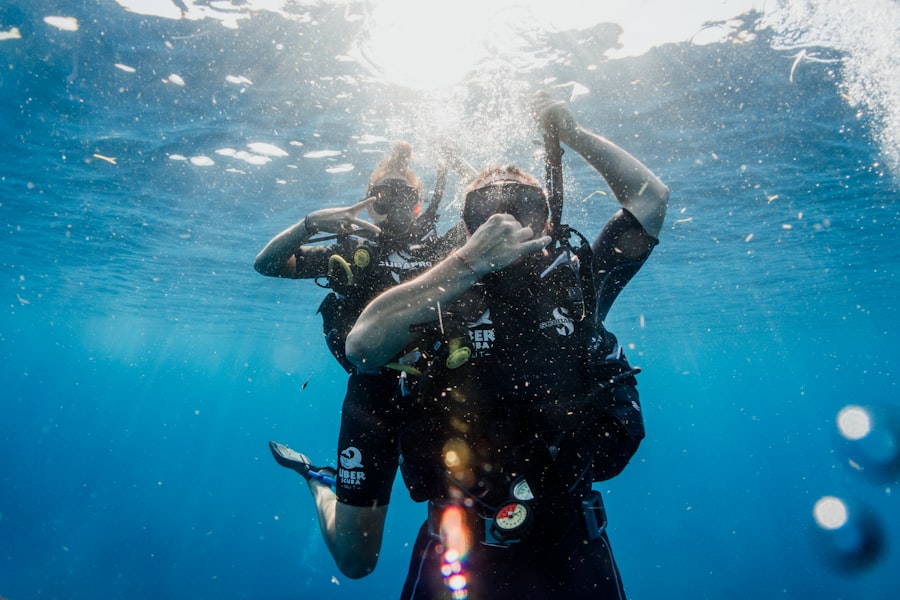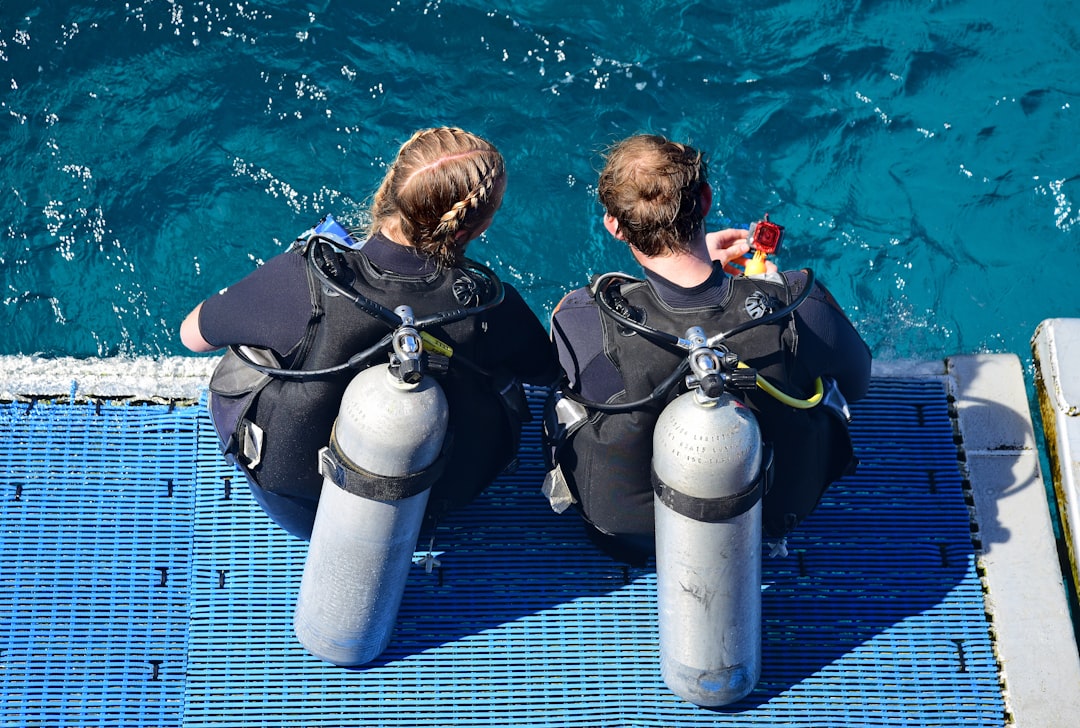The Drake Passage, a body of water that separates South America from Antarctica, is renowned for its tumultuous seas and breathtaking marine biodiversity. Stretching approximately 600 miles, this passage is not only a critical route for maritime navigation but also a prime destination for adventurous divers seeking to explore its depths. The waters of the Drake Passage are often characterized by their unpredictable weather patterns and strong currents, which can pose challenges for even the most experienced divers.
However, the allure of its underwater wonders draws many to brave the elements in search of an unforgettable diving experience. As divers prepare to embark on their journey into the Drake Passage, they are met with the promise of encountering a unique underwater ecosystem teeming with life. The convergence of the Atlantic and Pacific Oceans creates a rich tapestry of marine habitats, making it one of the most biodiverse regions on the planet.
From vibrant coral reefs to expansive kelp forests, the underwater landscape is as varied as it is captivating. For those willing to navigate the challenges of this remarkable passage, the rewards are plentiful, offering a glimpse into a world that few have the opportunity to witness firsthand.
Key Takeaways
- Drake Passage is a treacherous stretch of water between South America’s Cape Horn and the South Shetland Islands of Antarctica.
- The unique underwater ecosystem in Drake Passage is home to a diverse range of marine life, including whales, seals, and penguins.
- Divers must be well-prepared and experienced to dive in Drake Passage due to its extreme weather conditions and strong currents.
- Drake Passage has a rich history of exploration and discovery, with famous expeditions by explorers such as Sir Francis Drake and Charles Darwin.
- The best time of year to dive in Drake Passage is during the austral summer, from November to March, when the weather is milder and wildlife is abundant.
The Unique Underwater Ecosystem
The underwater ecosystem of the Drake Passage is a marvel of nature, characterized by its rich biodiversity and unique geological features. The cold, nutrient-rich waters support a plethora of marine life, including various species of fish, mollusks, and crustaceans. The mixing of ocean currents creates an environment where phytoplankton thrives, serving as the foundation for the entire food web.
This abundance of nutrients attracts larger marine animals, making the Drake Passage a hotspot for both divers and researchers alike. Among the most striking features of this underwater ecosystem are the vibrant kelp forests that flourish in its depths. These underwater jungles provide shelter and sustenance for countless species, from small fish to larger predators like seals and sea lions.
The kelp not only supports marine life but also plays a crucial role in carbon sequestration, helping to mitigate climate change. Divers exploring these underwater forests are often treated to a mesmerizing display of colors and movement as schools of fish dart through the swaying fronds of kelp, creating an enchanting underwater ballet.
Preparing for a Dive in Drake Passage

Preparing for a dive in the Drake Passage requires careful planning and consideration due to the region’s unpredictable conditions. Divers must ensure they are equipped with the appropriate gear, including wetsuits or drysuits designed for cold-water diving. The temperature of the water can drop significantly, so thermal protection is essential to ensure comfort and safety during dives.
Additionally, divers should invest in high-quality dive computers and safety equipment to monitor their depth and air supply effectively. Beyond physical preparation, mental readiness is equally important when diving in such challenging waters. Divers should familiarize themselves with the specific dive sites they plan to explore, understanding the unique characteristics and potential hazards associated with each location.
Engaging in thorough briefings with dive instructors or guides can provide valuable insights into local conditions and wildlife encounters. By taking these preparatory steps, divers can enhance their experience and ensure they are well-equipped to handle the challenges that may arise during their underwater adventures.
The History of Drake Passage
| Year | Event |
|---|---|
| 1616 | Discovery of Drake Passage by Sir Francis Drake |
| 1830 | First recorded crossing of Drake Passage by a ship |
| 1940 | First scientific expedition to study Drake Passage |
| 1970 | Establishment of the Antarctic Treaty System, which includes regulations for Drake Passage |
| 2019 | Record-breaking scientific research on ocean currents in Drake Passage |
The history of the Drake Passage is steeped in exploration and discovery, dating back centuries when early navigators sought new trade routes and territories. Named after Sir Francis Drake, an English sea captain who famously traversed these waters in the late 16th century, the passage has long been recognized as a significant maritime route. Its treacherous conditions have earned it a reputation as one of the most challenging bodies of water to navigate, often referred to as “the roughest sea in the world.” Throughout history, the Drake Passage has played a pivotal role in shaping maritime exploration and scientific research.
It served as a gateway for explorers venturing into Antarctica, leading to significant discoveries about the continent’s geography and ecology. The passage has also been instrumental in advancing our understanding of ocean currents and climate patterns, making it a focal point for oceanographic studies. As modern technology has evolved, so too has our ability to explore and appreciate this remarkable region, paving the way for new adventures in diving and marine conservation.
The Best Dive Sites in Drake Passage
Diving enthusiasts flock to the Drake Passage for its diverse array of dive sites, each offering unique experiences and opportunities for exploration. One of the most popular locations is Elephant Island, known for its dramatic underwater topography and rich marine life. Divers can encounter everything from vibrant coral gardens to fascinating rock formations while exploring this remote island’s waters.
The site is also famous for its historical significance as a refuge for Ernest Shackleton’s ill-fated expedition. Another must-visit dive site is Deception Island, an active volcanic caldera that provides a unique diving experience unlike any other. The warm waters surrounding this island are rich in nutrients, attracting an abundance of marine life.
Divers can explore submerged volcanic features while witnessing the fascinating interplay between geothermal activity and marine ecosystems. The combination of stunning underwater landscapes and diverse wildlife makes Deception Island a favorite among divers seeking adventure in the Drake Passage.
The Wildlife You Can Expect to See

The wildlife inhabiting the waters of the Drake Passage is as diverse as it is captivating. Divers can expect to encounter an array of marine species, including seals, sea lions, and various types of whales. The passage is particularly famous for its populations of humpback whales and orcas, which can often be seen breaching or feeding in these nutrient-rich waters.
For many divers, witnessing these majestic creatures in their natural habitat is a highlight of their diving experience. In addition to larger marine mammals, the underwater world is home to countless smaller species that contribute to its vibrant ecosystem. Colorful fish species such as rock cod and Antarctic toothfish inhabit the rocky crevices, while playful sea otters can be spotted frolicking among kelp beds.
The presence of diverse marine life not only enhances the diving experience but also underscores the importance of conservation efforts aimed at protecting these fragile ecosystems.
Safety Tips for Diving in Drake Passage
Safety should always be a top priority when diving in the challenging conditions of the Drake Passage. Divers are advised to stay informed about weather conditions and tidal patterns before embarking on their dives. Sudden changes in weather can lead to dangerous situations, so having contingency plans in place is essential.
Additionally, divers should always dive with a buddy or as part of a guided group to ensure safety and support during their underwater adventures.
Divers should possess advanced open water certifications or specialized training for cold-water diving to ensure they are adequately prepared for the unique challenges presented by the Drake Passage.
Regularly checking equipment before each dive is also vital; ensuring that all gear is functioning correctly can prevent accidents and enhance overall safety during dives.
The Challenges of Diving in Drake Passage
Diving in the Drake Passage presents numerous challenges that require careful consideration and preparation. One of the most significant obstacles is the unpredictable weather conditions that can change rapidly, leading to rough seas and strong currents. Divers must be prepared for varying visibility levels and potential surges that can make navigation difficult.
Understanding these challenges is essential for ensuring a safe and enjoyable diving experience. Another challenge divers may face is dealing with cold water temperatures that can drop significantly during dives. Hypothermia is a real risk if divers are not adequately equipped with thermal protection gear such as drysuits or thick wetsuits.
Additionally, strong currents can make it challenging to maintain position while exploring dive sites; divers must be skilled at managing their buoyancy and using proper techniques to navigate effectively through these dynamic environments.
The Best Time of Year to Dive in Drake Passage
The best time to dive in the Drake Passage largely depends on weather conditions and marine wildlife activity. Generally, the summer months from November to March offer more favorable diving conditions due to milder temperatures and calmer seas. During this period, visibility tends to improve, allowing divers to fully appreciate the stunning underwater landscapes and vibrant marine life.
In addition to favorable weather conditions, summer also coincides with peak wildlife activity in the region. Many migratory species return during this time, providing divers with opportunities to encounter whales, seals, and other marine animals that may not be present during colder months. For those looking to maximize their diving experience in the Drake Passage, planning trips during these months can yield unforgettable encounters with both marine life and breathtaking underwater scenery.
Conservation Efforts in Drake Passage
Conservation efforts in the Drake Passage are crucial for protecting its unique ecosystems and ensuring sustainable practices within this fragile environment. Various organizations work tirelessly to promote awareness about marine conservation issues while advocating for policies that safeguard marine habitats from overfishing and pollution. These initiatives aim not only to preserve biodiversity but also to educate divers about their role in protecting these precious ecosystems.
One notable effort involves monitoring marine species populations through research programs that track changes over time due to climate change or human activity. By gathering data on species distribution and health, scientists can better understand how best to manage these resources sustainably while promoting responsible diving practices among enthusiasts visiting this remarkable region.
The Future of Scuba Diving in Drake Passage
The future of scuba diving in the Drake Passage holds great promise as advancements in technology continue to enhance safety measures and exploration capabilities within this challenging environment. Innovations such as improved dive gear designed specifically for cold-water conditions will allow more divers to experience its wonders without compromising safety or comfort. Moreover, increased awareness surrounding environmental conservation will likely lead to more sustainable practices among divers visiting this pristine region.
As more individuals recognize their impact on marine ecosystems, there will be greater emphasis placed on responsible diving practices that prioritize preservation over exploitation. With continued efforts toward conservation education and sustainable tourism initiatives, scuba diving in the Drake Passage can thrive while ensuring that its breathtaking underwater world remains protected for generations to come.
Scuba diving in the Drake Passage is an exhilarating experience that offers divers a unique opportunity to explore one of the most remote and challenging marine environments on the planet. The passage, known for its turbulent waters and rich biodiversity, attracts adventurous divers seeking to witness the stunning underwater landscapes and diverse marine life. For those interested in learning more about the geographical and environmental aspects of this region, a related article can be found on MyGeoQuest. This article provides insights into the natural wonders and challenges of the Drake Passage, making it a valuable resource for anyone planning a diving expedition in this area. You can read more about it by visiting this article on MyGeoQuest.
WATCH NOW! Drake Passage: Earth’s Deadliest Waters Revealed
FAQs
What is the Drake Passage?
The Drake Passage is the body of water between the southern tip of South America and the northern tip of the Antarctic Peninsula. It is known for its rough seas and challenging weather conditions.
Is scuba diving in the Drake Passage possible?
Yes, scuba diving is possible in the Drake Passage, but it is only suitable for experienced divers due to the extreme conditions and cold water temperatures.
What are the diving conditions like in the Drake Passage?
Diving conditions in the Drake Passage are challenging, with strong currents, cold water temperatures, and unpredictable weather. Divers should be prepared for rough seas and limited visibility.
What kind of marine life can be found in the Drake Passage?
The Drake Passage is home to a diverse range of marine life, including seals, penguins, whales, and various species of fish. Divers may also encounter cold-water corals and sponges.
Are there dive operators that offer trips to the Drake Passage?
Yes, there are dive operators that offer expeditions to the Drake Passage for experienced divers. These trips typically involve liveaboard vessels and are often part of larger Antarctic diving expeditions.
What are the best times of year for scuba diving in the Drake Passage?
The best time for scuba diving in the Drake Passage is during the Antarctic summer, which runs from November to March. This is when the weather is relatively milder and the sea ice is less extensive.
